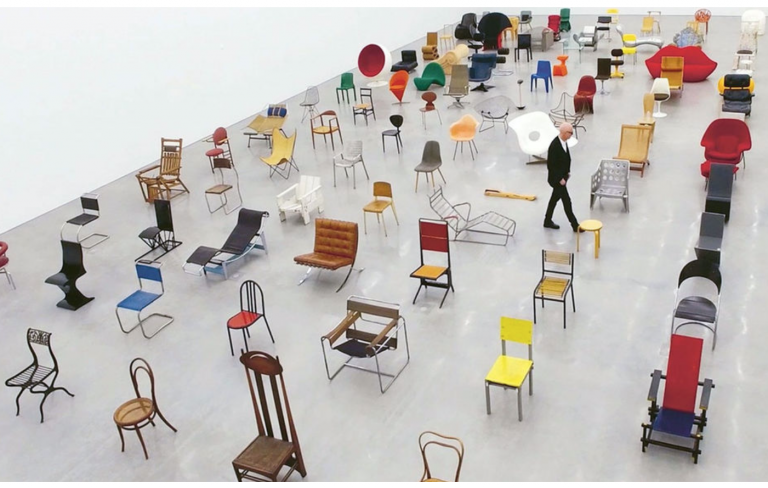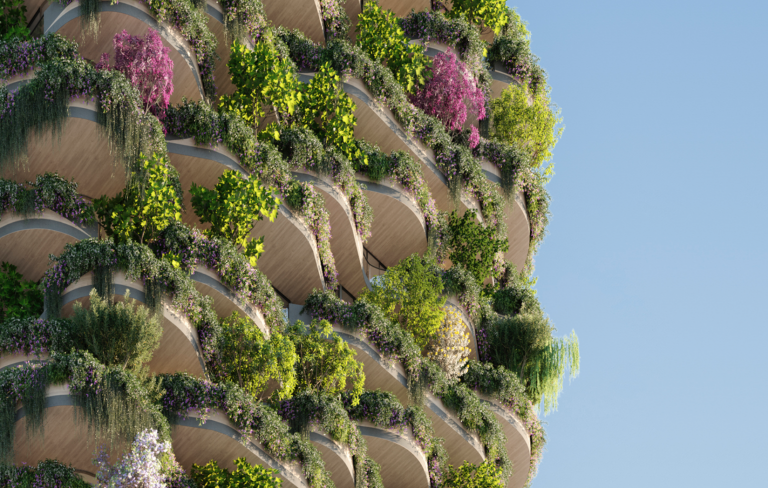Our homes are an expression of the way we live, they shape our everyday routines and fundamentally affect our well-being. With the major exhibition »Home Stories: 100 Years, 20 Visionary Interiors« the Vitra Design Museum aims to reopen the conversation about the contemporary private interior and its evolution. In a captivating narrative leading visitors backwards in time, the exhibition will highlight important societal, political, urban, and technical shifts that have shaped the design and the use of the Western interior over the last 100 years. From current issues facing the domestic domain — such as the efficient use of dwindling urban space to the blurring of work-life boundaries — the journey includes our fascination with loft-living in the 1970s, the shift from formal to informal dwelling in the 1960s, the rise of household appliances in the 1950s, and the introduction of open-space planning in the 1920s. The exhibition is organized around 20 iconic interiors.
Today, interior design for the home sustains a giant, global economy of furniture, textiles, decoration, and lifestyle accessories. Both past and present trends from the world of domestic interiors feed an entire branch of the media, including magazines, television programming, blogs, and social media channels. However, while the question of housing has become the topic of lively public debates, the domestic interior is found to be increasingly lacking in serious discourse. This is even more surprising since interiors reflect some of the most pressing issues of our time. It is time to review the interior design of our homes.
In presenting iconic interiors as well as examples that are not necessarily universally known, the exhibition »Home Stories« wants to reignite the fundamental discourse about the discipline of interior design. With works by outstanding designers, architects, and artists, »Home Stories« will reflect on how interior design has always been inspired, enriched, and shaped by other disciplines, including not only architecture and product design, but also the fine arts and stage design. Contrasting the repetitive DIY – and Instagram-inspired look of modern Western living that often includes the same design icons, colour palettes, and furniture arrangements, the exhibition constitutes a compelling sensorial journey through the recent history of the domestic sphere, including models, drawings, furniture, films, and other media.
The exhibiton starts with a look at a few selected contemporary interiors which reflect the radical shifts in private interiors that we are currently experiencing. The second section of the exhibition looks at the radical shifts in interior design from the 1960s to the 1980s. Another decisive era in the formation of the modern interior were the post-war years, when the modern interior design style that had been developed before World War II entered the domestic realm of an increasing number of people in the Western world. The 1920s and ’30s saw the emergence of several key concepts of domestic space and interior decoration that still dominate our interiors today.
Throughout the twentieth century, the debate on interior design evolved between polar opposites of standardization, functionalism, and formal reduction on the one hand and individualization and ornamentation on the other, both of which continue to shape our homes to this day. The exhibition »Home Stories« revisits some of the decisive moments of this evolution and thus raises the question for today: How do we want to live?
As part of the exhibition, a walk-in reconstruction of the »Visiona 2« by Danish designer Verner Panton will be presented at the Fire Station. The organically shaped living landscape in shades of red and blue, inspired by pop culture and science fiction, was one of the most remarkable domestic interiors of the 20th century.
A comprehensive publication has been published on the occasion of the exhibition with contributions by Joseph Grima, Alice Rawsthorne and Penny Sparke, as well as interviews with Nacho Alegre, Adam Charlap Hyman, Ilse Crawford, Sevil Peach and others. The exhibition at the Vitra Design Museum is accompanied by an exhibition program of guided tours, lectures, public talks, workshops and other events.


